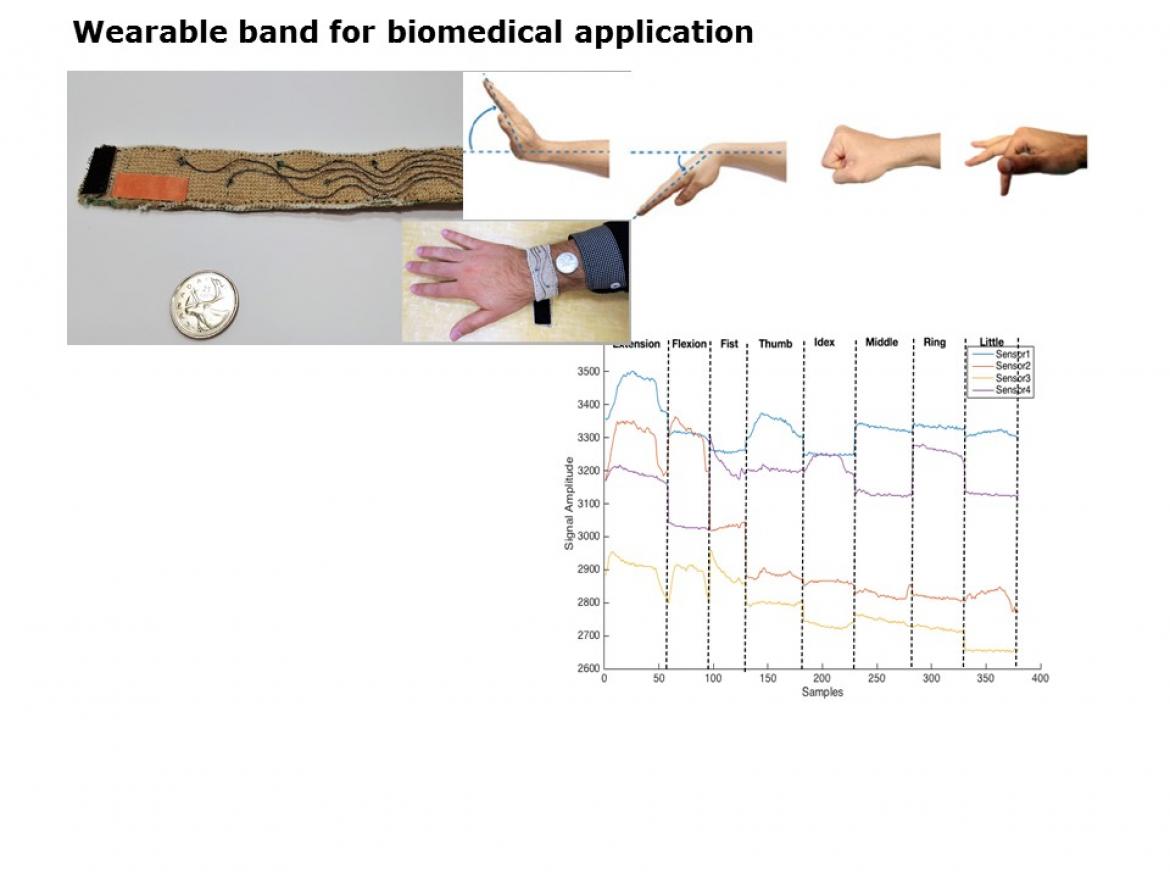
Human gesture monitoring has always been the focus of many academic studies in the biomedical and commercial field. The main challenges are focused on achieving a reliable, high sensitive and fully wearable device that minimizes the discomfort or embarrassment of patient. Currently all the systems for monitoring the movements have strong limitations. For example, systems based on 3D infrared camera to recognize finger gestures or other devices based on camera recognition suffer from line-of-sight occlusions and have heavy computation requirements. Other sensors that recently become more common are devices based on electromyography (EMG). In this case, these sensors have problems detecting finer finger gestures because they use less sensitive dry electrodes, and in this way, they are susceptible to sweat and skin impedance changes over time.
In the last years, two interest system for gestural controlling, with high performance, have been proposed. The first one is based on Electrical Impedance Tomography (EIT). This system has a high accuracy but the electrodes require a narrow contact with the skin for proper operation. The other system has been proposed by MIT laboratories. This system is based on force sensitive resistors (FSRs) and exhibits a high level of reliability; however, its efficiency has intrinsic limitations due to the type of sensor. Furthermore, systems based on FSR require a close contact with the skin of the user to ensure that the movements can be detected, thus creating constriction and discomfort to the patient. Moreover, such systems are not fully wearable because, albeit flexible, they do not have the peculiarity of being extensible.
Here we present a novel system for monitoring hand gestures based on polymeric strain gauge sensors. This system includes low power consumption and stretchable devices mounted on a breathable cotton wristband that maintains high reliability monitoring, making this device unique in the landscape of gestural recognition. The presented system is easy to use, since it should be only worn to start the monitoring of the movements. The wristband is constituted by one single comfortable piece with electronics embedded on it. We conducted an experiment to validate the performance of the system, using a commercial optical technology (Leap motion) to properly label each gesture. The collected hand gesture data were evaluated by two well-established machine learning algorithms Linear Discriminant Analysis (LDA) and Support Vector Machine (SVM).

